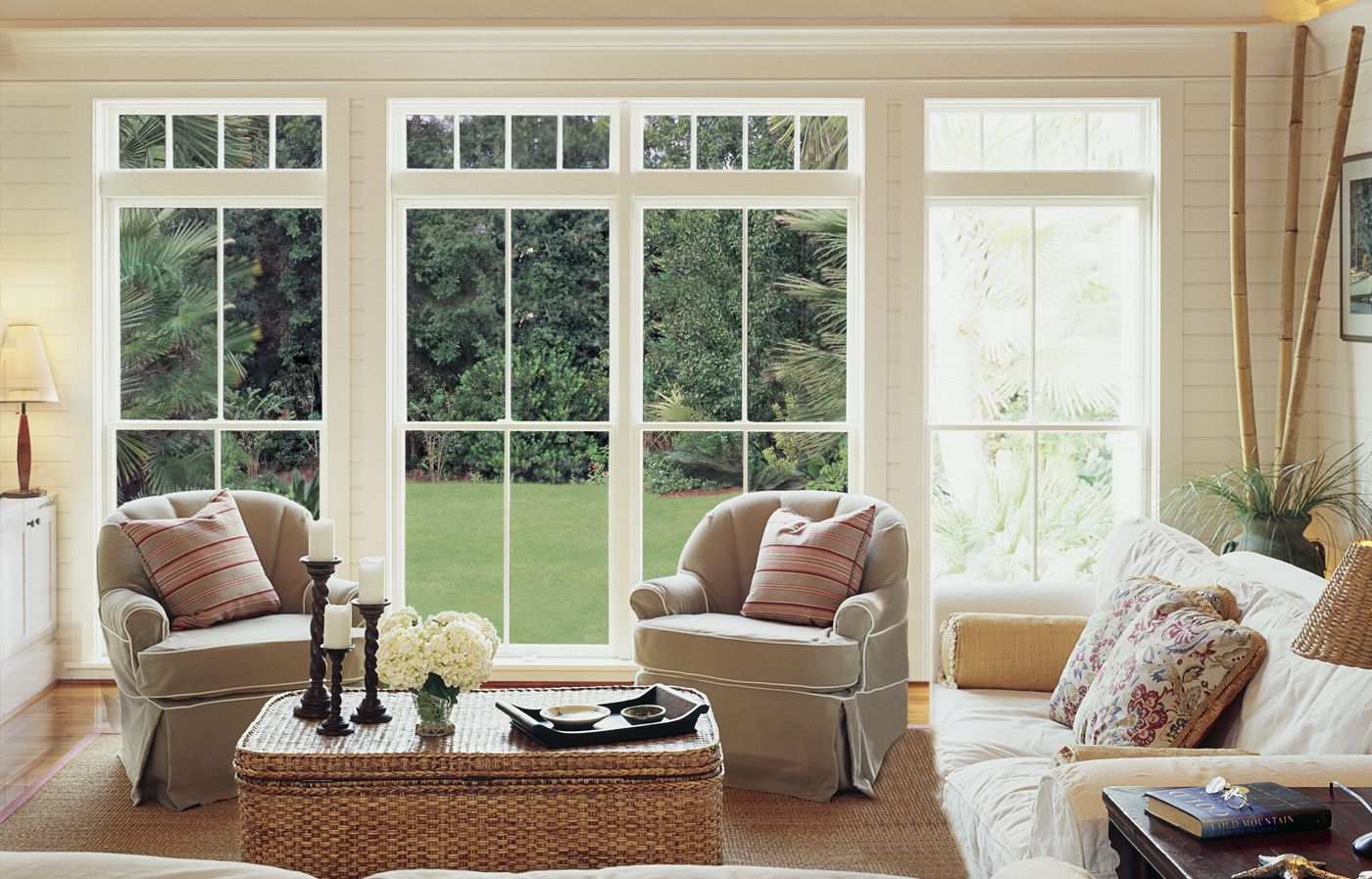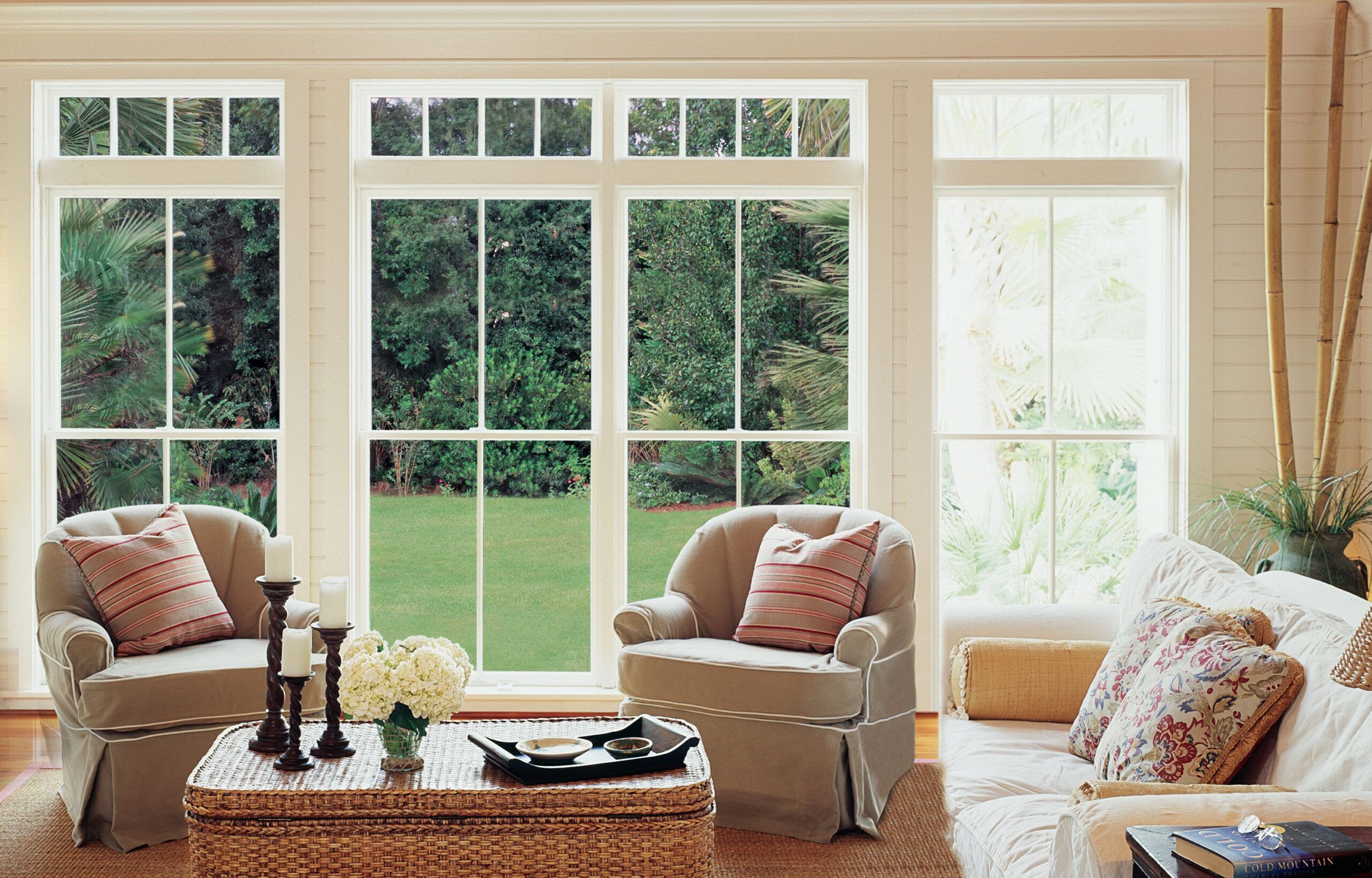
Wood windows have been a staple in home construction for centuries due to their natural appearance, insulating properties, and timeless appeal. In this guide, we’ll explore everything you need to know about wood windows, from different types to energy efficiency, helping you make an informed decision for your home.
Shown: Andersen 400 Series Woodwright
Similar to shown: Jeld-Wen Custom Wood
Understanding Wood Windows: Benefits and Drawbacks
Wood windows offer numerous advantages that have kept them popular among homeowners and architects alike. They provide excellent insulation, are environmentally friendly, and can be customized to fit any architectural style. Wood windows are also known for their durability, with many lasting for decades when properly maintained.
However, wood windows do have some drawbacks. They require more maintenance than some alternatives and can be susceptible to rot, warping, or insect damage. Additionally, wood windows are often more expensive than vinyl or aluminum options.
Types of Wood Windows
Wood windows come in various styles to suit different architectural needs and personal preferences. Here are some of the most common window types:
Double-Hung Windows
Double-hung windows are versatile, easy to clean, and the most popular type in the United States. These windows feature two sashes (movable panels) that slide vertically in the frame.
The anatomy of a double-hung window includes several key components:
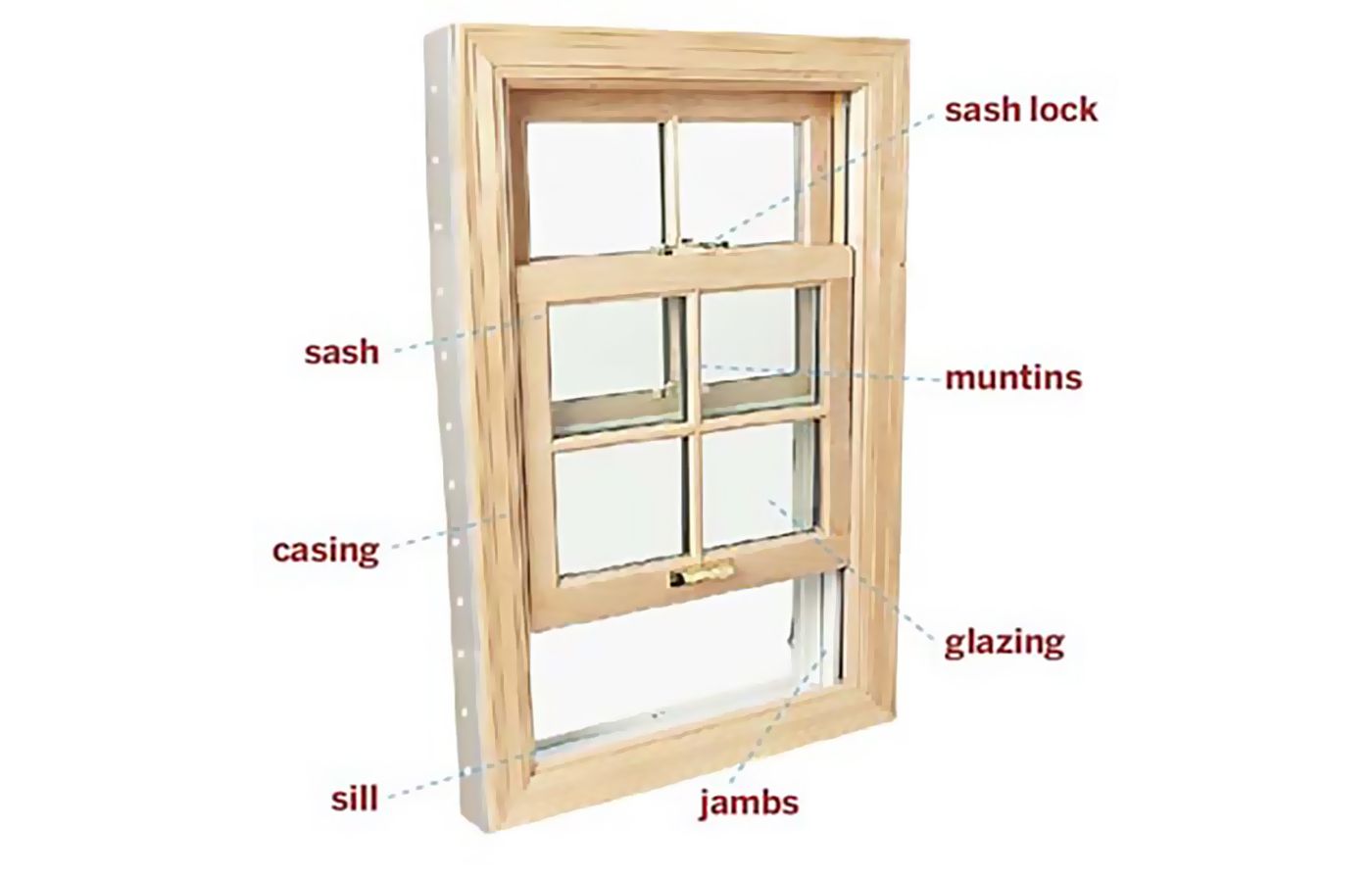
- Casing: Trim that covers the gap between the jambs and house framing
- Glazing: The window glass
- Jambs: Sides and top of the frame that surround the sashes
- Muntins: Slender strips that divide the glazing
- Sash: The movable or fixed frame that supports the glazing
- Sash Lock: Hardware that secures the top and bottom sashes
- Sill: Bottom part of the frame, angled to shed water
Casement Windows
Casement windows have hinges on one side and open outward like a door. They provide excellent ventilation and are ideal in areas where maximum airflow is desired, such as kitchens or bathrooms. They are also energy-efficient, offering a tighter seal when closed.
Bay and Bow Windows
Bay and bow windows project outward from the exterior wall, creating additional interior space and allowing more light to enter the room. Bay windows usually consist of a large central window flanked by two smaller windows at an angle. Bow windows are similar but use four or more panels to create a curved appearance. These windows can add architectural interest and value to a home.
Cost of Wood Windows
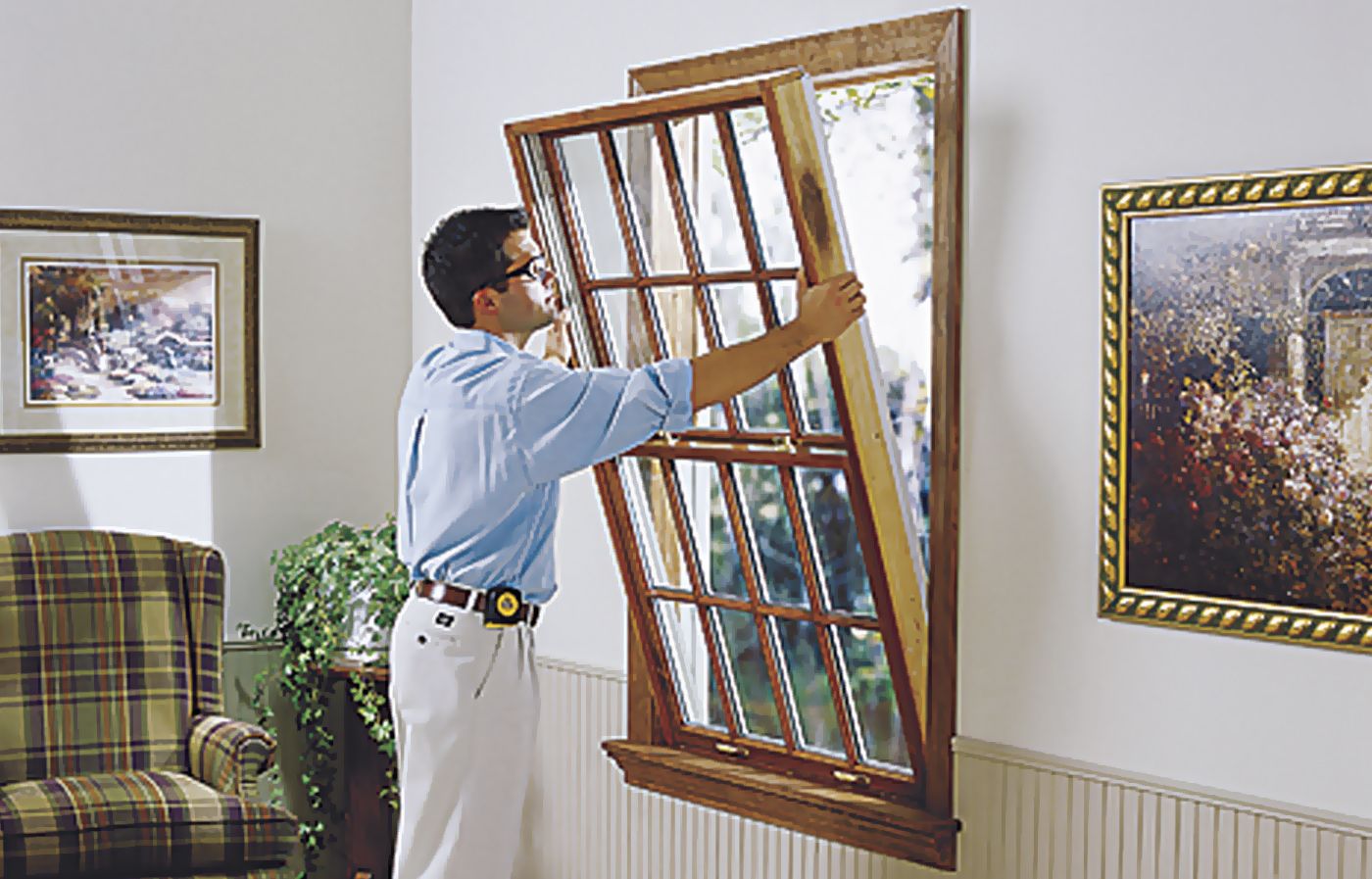
According to our 2024 survey of 1,000 window customers, you can expect to spend an average of $1,244 per wood window. The cost of wood windows can vary significantly based on several factors:
Wood Type
The wood type and finish can significantly impact the appearance and performance of your windows as well as the cost. Common woods used for windows include:
| Type | Average Price | Advantages | Disadvantages |
|---|---|---|---|
| Pine | $650–$900 | Affordable Good insulation | Susceptible to scratches and dents |
| Douglas Fir | $695–$970 | High strength-to-weight ratio Withstands temperature changes | Prone to warping if not properly sealed |
| Oak | $700–$1,000 | Strong Attractive grain pattern | More prone to cracking during installation |
| Mahogany | $800–$1,100 | Rich color Decay-resistant | Difficult to paint |
| Maple | $700–$1,100 | Durable Clean, modern look | Difficult to restain |
| Cherry | $800–$1,100 | Rich, warm color Lower environmental impact | Color may change over time |
| Teak | $1,400–$1,900 | Durable Resists rot and insects | Very expensive compared to some options |
Number of Windows
Of course, the number of windows you install or replace will significantly impact your cost. You may qualify for a bulk discount by replacing all of your windows at once.
Custom-Made Wood Windows
Stock wood windows are the most affordable option—however, they are only available in limited sizes and styles.
Conversely, custom wood windows offer more design flexibility but are more expensive.
Installation Expenses
While experienced homeowners can DIY window installation, professional installation ensures proper fit and function. Expect to pay more to have a professional install your wood windows.
Energy Efficiency of Wood Windows
Wood windows are known for their natural insulating properties, but efficiency will vary between window types. For a clear understanding of your window’s insulation features, refer to the following elements, which you can find on its National Fenestration Rating Council (NFRC) label:
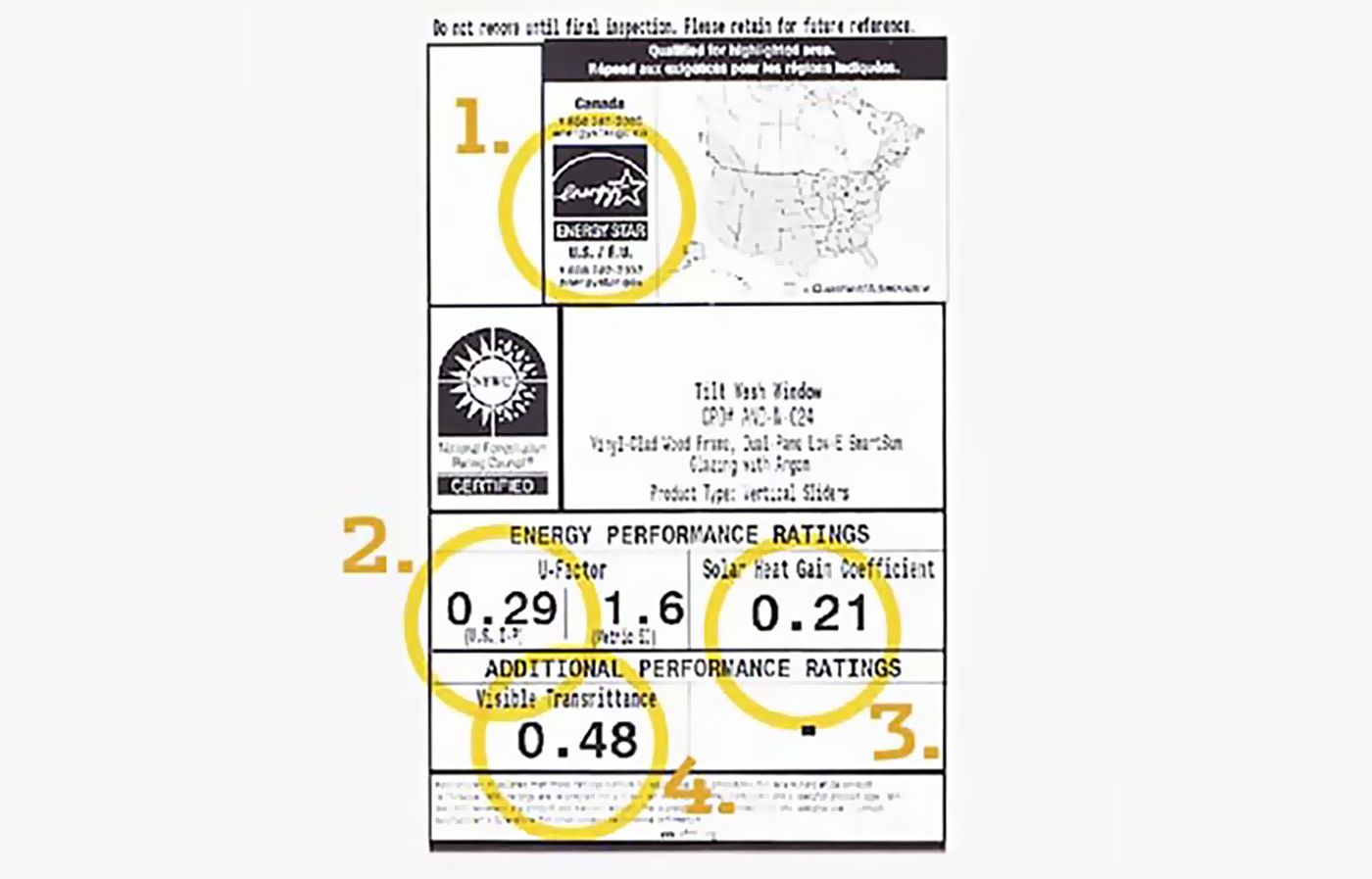
- ENERGY STAR certification: The shaded portions of the map show where the window meets regional ENERGY STAR performance criteria.
- U-factor: Measures how well a window stops heat flow on a scale of 0.10 to 1.20. The smaller the number, the better.
- Solar heat gain coefficient (SHGC): Measures how well glazing blocks the sun’s heat on a scale of zero to one. The lower the number, the less heat gets in.
- Visible Transmittance (VT): Tells how much light passes through; zero is opaque, and one is transparent. Glazing with a VT of 0.60 or more looks clear. A lower VT limits glare but can slightly darken rooms.
The U.S. Department of Energy provides recommendations based on your local climate to help you choose the best windows for your home.
Maintenance and Care for Wood Windows
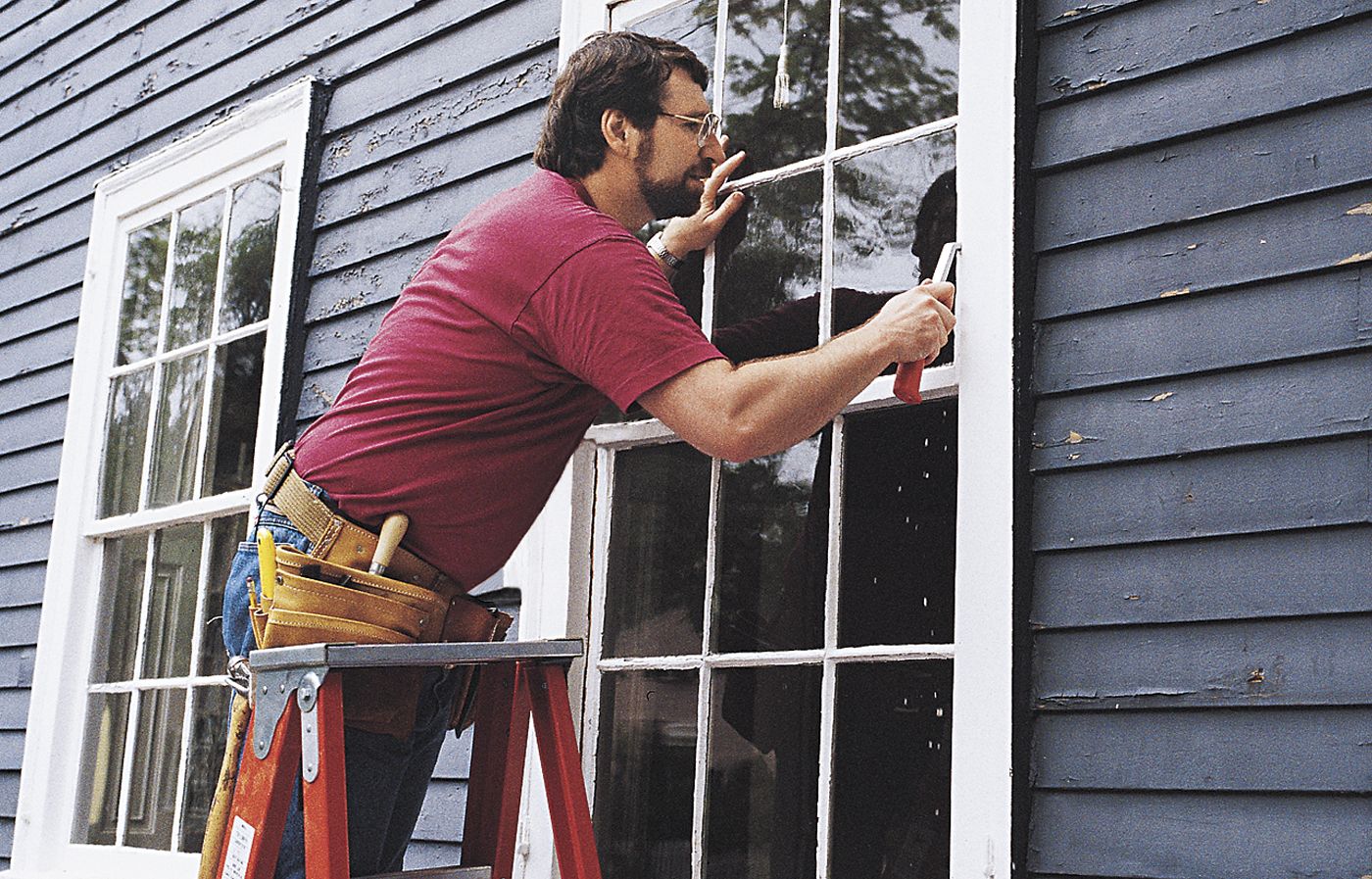
Proper maintenance is crucial for ensuring the longevity and performance of wood windows.
Routine Cleaning
Regular cleaning helps prevent dirt and debris from accumulating and potentially damaging the wood. Use a soft cloth or brush with mild soap and water to clean the frames and glass.
Painting and Staining
Repainting or restaining wood windows every few years helps protect them from moisture and UV damage. Be sure to use high-quality exterior paint or stain suitable for wood windows.
Weatherproofing Techniques
Apply weatherstripping and caulk around the window frames to prevent air and water infiltration. Inspect and replace these materials as needed to maintain a tight seal.
Comparing Wood Windows to Other Materials
While wood windows have many advantages, consider how they stack up against other popular options.
| Wood versus… | Details |
|---|---|
| Vinyl | Vinyl windows are less expensive and require less maintenance than wood, but they don’t offer the same aesthetic appeal and are less environmentally friendly. Wood windows provide better insulation and can last twice as long as vinyl with proper care. |
| Fiberglass | Fiberglass windows offer excellent durability and energy efficiency and are often more insulating than wood. While you can paint fiberglass to mimic the look of wood, the effect won’t have quite the same texture or warmth. Fiberglass tends to be more expensive. |
| Aluminum | Aluminum windows are lightweight and low-maintenance but lack the insulative properties of wood. They work best with modern architectural styles, whereas wood windows lend themselves to more traditional-looking homes. |
Choosing the Right Wood Windows for Your Home
Selecting the ideal wood windows involves considering several factors:
Architectural Considerations
Choose window styles that complement your home’s architecture. For example, double-hung windows suit traditional homes, while casement windows may be more appropriate for modern designs.
Budget Constraints
Balance your desired features with your budget. While custom wood windows offer the most options, stock windows can provide good quality at a lower price point.
Cladding Options
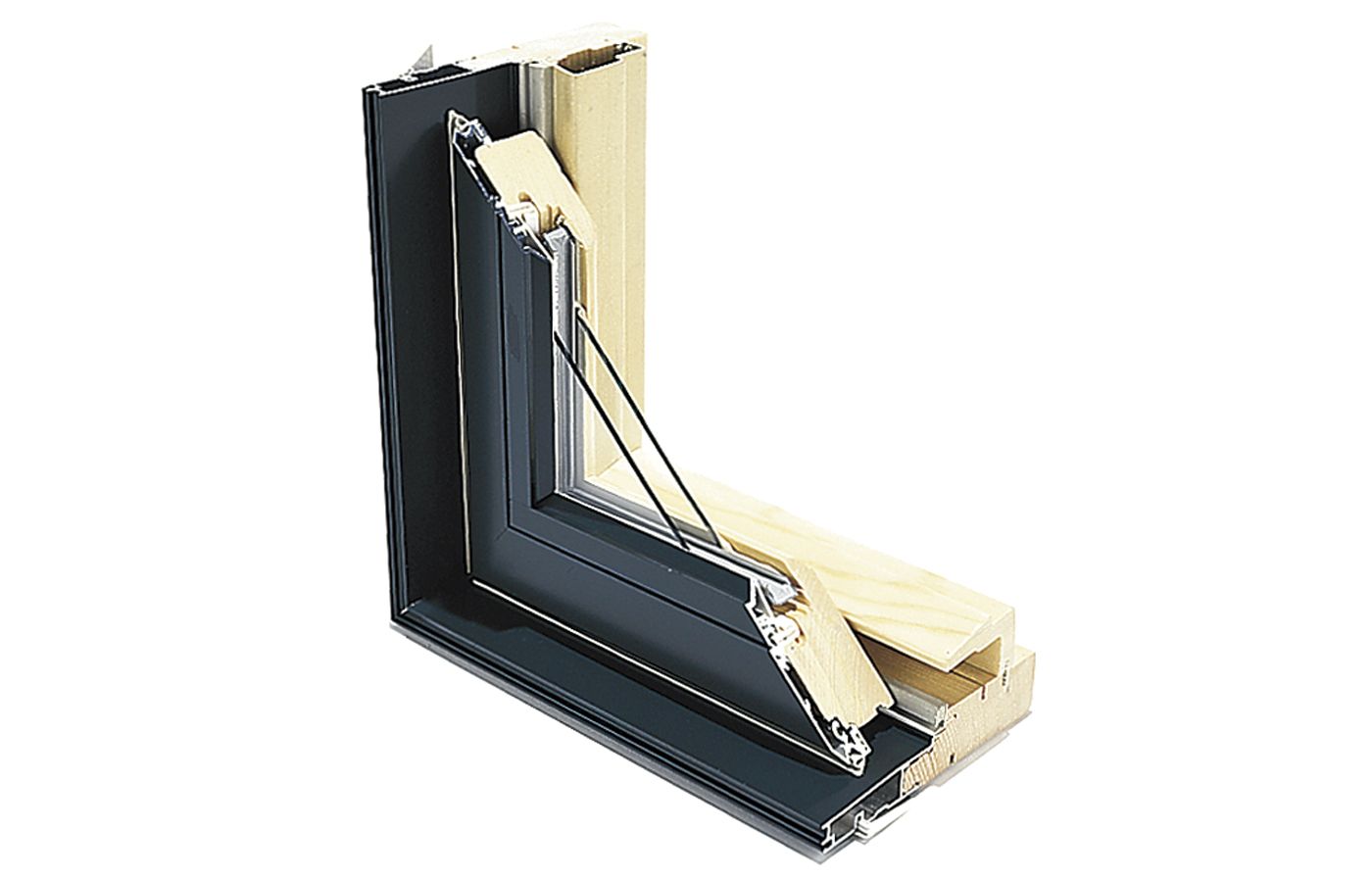
Cladding is a protective layer applied to the exterior of wood windows to enhance durability and reduce maintenance. Some homeowners like cladding for the protection it provides, while the high cost puts others off. Cladding options include:
- Aluminum: Durable and available in various colors
- Fiberglass: Highly durable and resistant to temperature changes
- Vinyl: Low-maintenance and affordable
Climate and Weather Factors
Consider your local climate when selecting glazing options and weatherproofing features. Homes in extreme climates may benefit from triple-pane glass or additional weatherstripping.
Glazing Options
Glazing refers to the glass used in windows. Modern wood windows offer various glazing options:
- Double-Pane: More efficient than single-pane, with potential improvements through heat-reflective low emissivity (“Low-E”) coatings and filling the space between glass sheets with denser-than-air gasses such as krypton or argon. The cost of double-pane windows can vary.
- Self-Cleaning: A titanium dioxide coating reacts with sunlight to loosen dirt, which washes off in the rain. You’ll still need to clean indoor surfaces.
- Triple-Pane: Offers the best barrier against the cold but reduces light transmission and adds weight and cost.
- Unbreakable: An invisible layer of plastic sandwiched between two sheets of standard glass helps to foil intruders, block sound, and withstand earthquakes and hurricanes.
Wood Window Installation
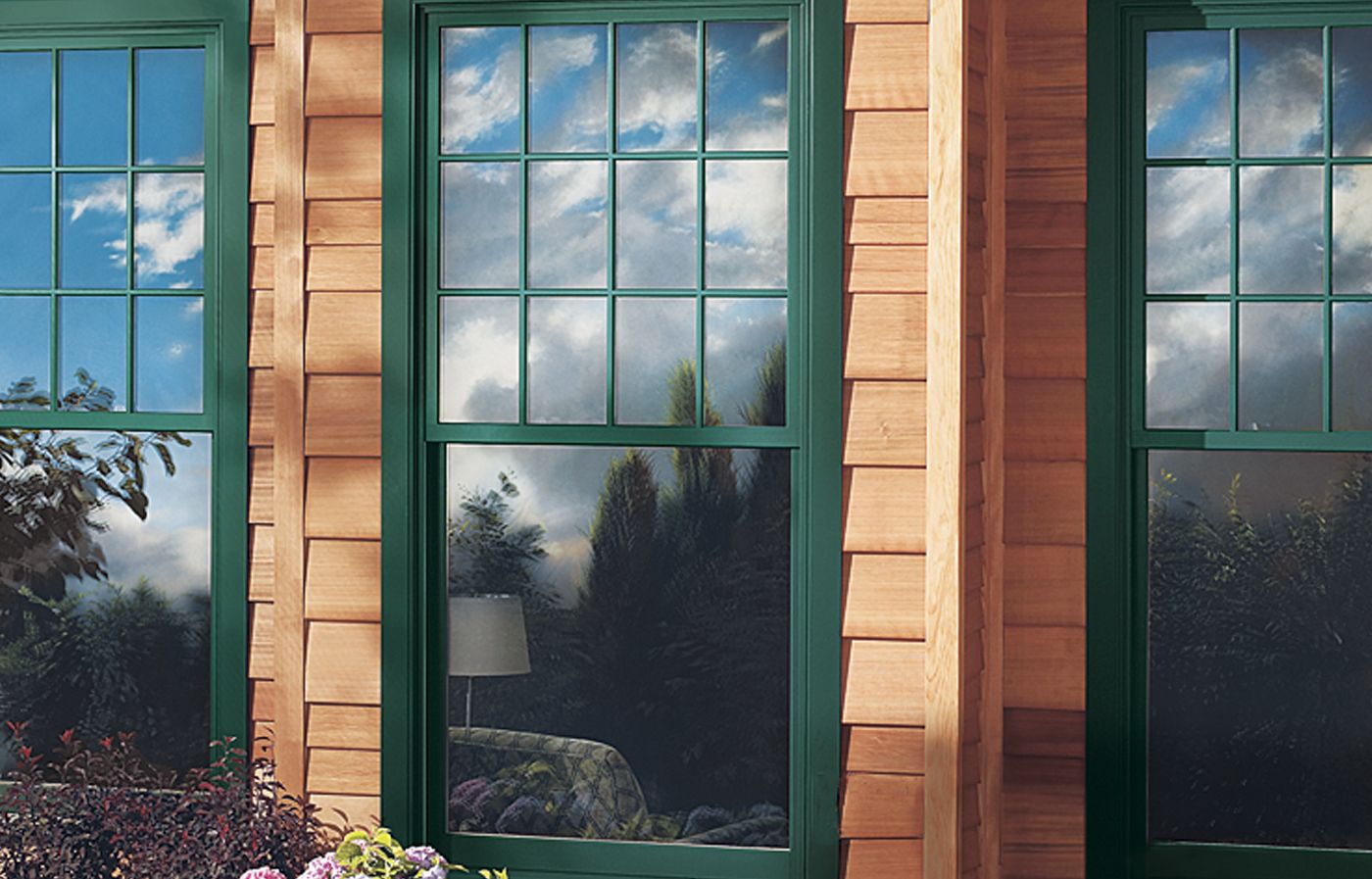
Proper installation is crucial for the performance and longevity of wood windows.
DIY Installation
Make sure you have the necessary skills and tools for DIY installation. Carefully measure the opening, level the frame, and properly seal around the window to prevent air and water infiltration.
When to Hire a Professional
We recommend professional installation for most homeowners. Experts can ensure proper fit, address any structural issues, and guarantee the window’s energy efficiency and functionality.
Wood Window Replacement Options
There are several options for replacing your wood windows. The cost of wood window replacements varies depending on the number of windows involved and their specifications.
Full Frame
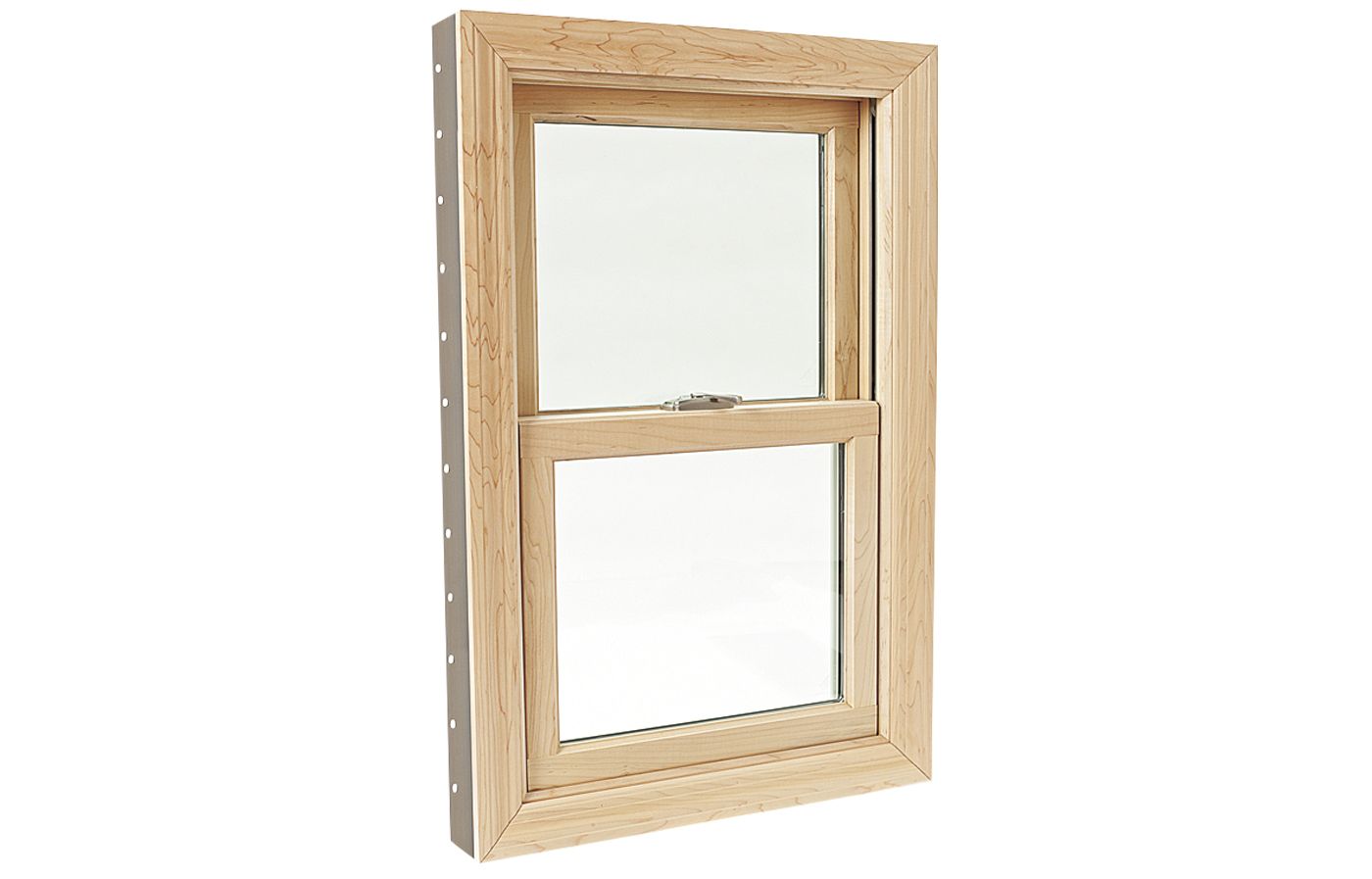
Completely replaces existing units. If the jamb or sill is in disrepair, we recommend this option.
- Pro: Offers the most styles and the highest energy efficiency. Opening a wall cavity allows you to upgrade insulation.
- Con: Hard to install; requires removal of interior and exterior trim and some siding.
Shown: Andersen 400 Series Woodwright
Frame-and-Sash Insert

A frame with factory-fitted sashes. You keep existing sills and jambs.
- Pro: Easiest to install and does not affect your trim.
- Con: The most expensive option, which can reduce the size of window opening by up to 1 inch on all sides.
Shown: Marvin Ultimate Insert
Sashes Only
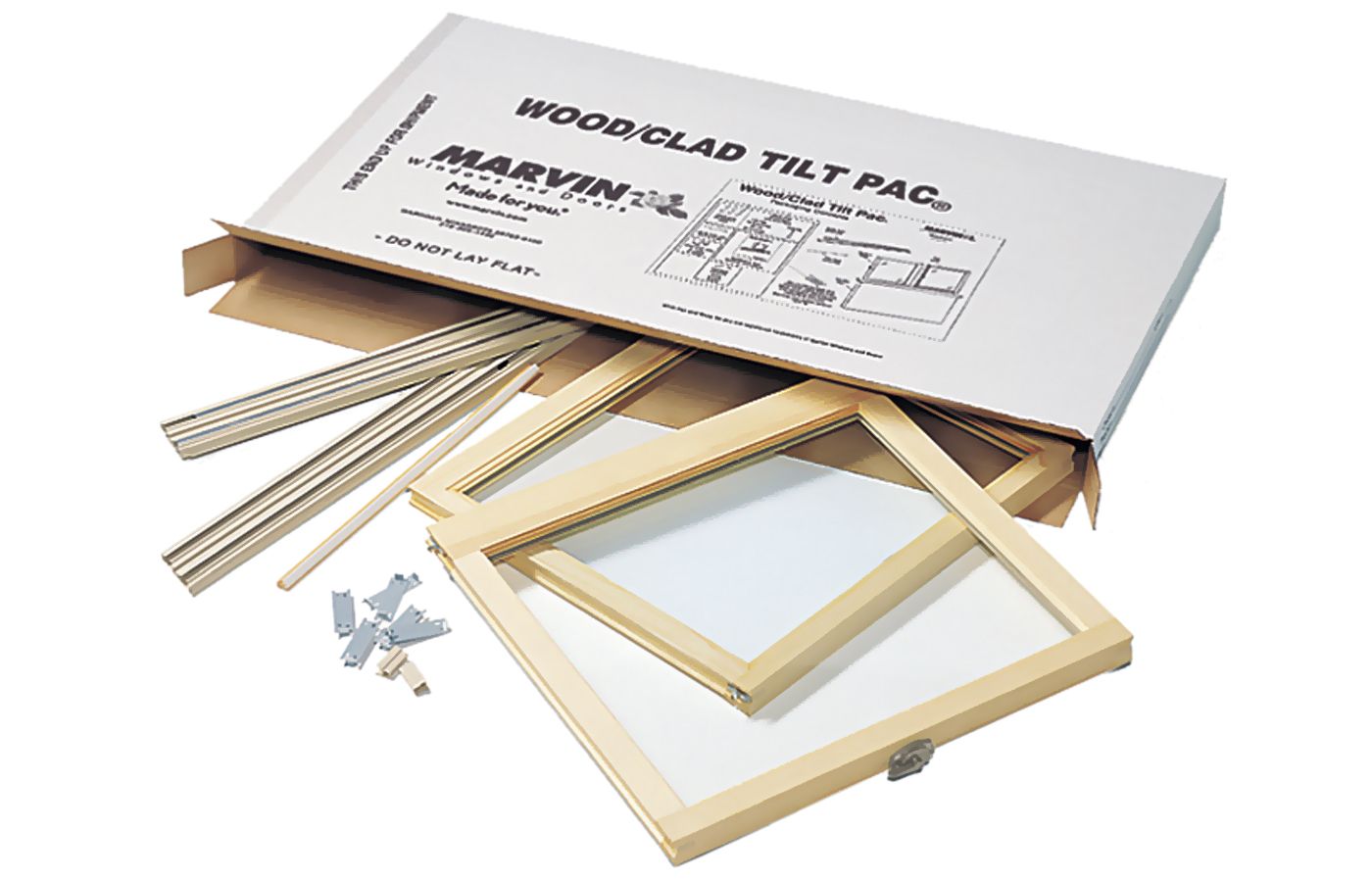
Units slide on plastic tracks mounted to existing side jambs.
- Pro: The least expensive option and does not affect the trim or size of the opening.
- Con: Available only in double- or single-hung assemblies and requires exact sill angle and window opening measurements. The existing frame must be square and solid.
Shown: Marvin Tilt-Pac
Enhancing Wood Windows with Accessories
Accessories can improve the functionality and appearance of your wood windows.
Window Treatments
Choose window treatments that complement your wood windows and enhance their insulating properties. Options include cellular shades, wooden blinds, or insulated curtains.
Security Features
Add locks, security sensors, or impact-resistant glass to improve the safety of your wood windows without compromising their aesthetic appeal.
Restoring and Repairing Wood Windows
With proper care, wood windows can last for generations. However, they may occasionally need repairs or restoration.
Common Issues and Solutions
Immediately address issues such as stuck sashes, broken panes, or deteriorating weatherstripping. Many minor repairs can be DIY projects, but consult a professional for more significant problems.
When to Replace vs. Repair
We recommend replacing your wood windows if they’ve suffered extensive rot or insect damage, the glass appears foggy all or most of the time, or they’ve become difficult to open and close.
However, if the issues are minor, restoration may be a more cost-effective option.
Our Conclusion
Wood windows offer a timeless appeal and excellent performance when properly maintained. Their natural insulating properties, customization options, and long lifespan make them a worthy investment for many homeowners. While they require more upkeep than some alternatives, the beauty and character they add to a home are unmatched.
